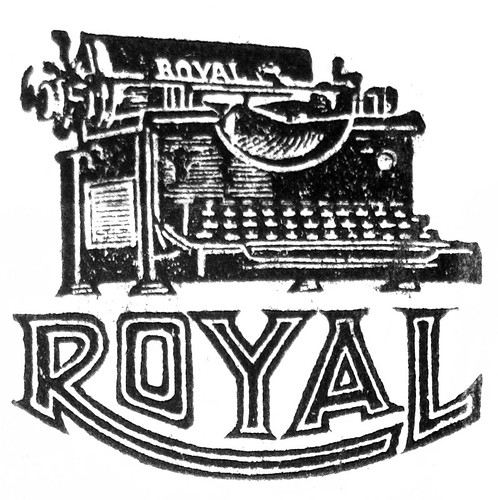
- Steve Stephens
- Platen Punisher
 Offline
Offline - From: San Francisco Bay Area, Calif.
- Registered: 13-3-2013
- Posts: 55
What are your typewriters' keys made of?
As a new collector last year I did some looking into the claims of many ebay sellers who claimed their typewriters had glass keys. Some didn't look like GLASS to me however. After receiving an old L.C. Smith & Bros. that had several keytops worn through (by long fingernails??) I knew that many keys that might look like glass are, in fact, not glass.
Here are some typewriters that do or do not have glass keys. Being as how my collecting interests mainly date to pre-1930 typewriters I will pretty much stay with them but feel free to post about key materials on newer and portable machines.
Underwood Nos. 3, 4, 5 all originally had glase keys but, after rebuilding, they might end up with some other keytop material. Underwood Nos. 6 and later had plastic of some sort. The early Underwood 3 and 4 bank portables have glass keys too.
Remingtons from the No.2 to the first version of the Model 10 with rectangular tabulator keys have glass. Subsequent models of the 10 and the 12, 16, 50, etc. have some other material, possibly celluloid. Rem-Blick and portables 1, 2, 3 have celluloid but the Model 4 seems to have glass (I want one).
Royal used mostly glass keytops but, surprisingly, their first flatbed model had celluloid- then glass on the later Standards (No.1) and later and into the 1940s. Way to go Royal giving us those nice glass keytops.
L.C. Smith & Bros. All have celluloid that I have seen.
Woodstock: celluloid.
Monarch Visible: celluloid
Harris Visible: celluloid
Corona 3: celluloid
This is only a small fraction of old tyepwriters but ones frequently encountered with the metal rimmed keytops. Many of the early machines have solid composition keytops such as the Smith Premiers, Olivers, New Century, Franklin, Jewett Nos. 4 and 10 and many more. What material was used on these creamy white and black keytops? Was it also celluloid?
A glass keytop will be perfectly flat with a reflection from the glass if clean. A celluloid keytop that closely resembles a glass key will usually have a slightly convex keytop surface without the reflection that a glass keytop will give you nor the look of the letters being UNDER the surface of the keytop.
A surefire way to tell if glass or another material is to stick a shart pin (sewing needle) into the keytop at a slight angle. Do this carefully right by the metal rim where any tiny impression will not be noticeable. If glass the pin will slight off to the side but, if not glass it will dig in and not slide off. You may be surprised at how many supposedly glass keytops are not actually glass.
- Uwe
- Moderator
 Offline
Offline 
- From: Toronto, Canada
- Registered: 12-3-2013
- Posts: 4,410
Re: What are your typewriters' keys made of?
On the subject of keys and the material they're made from, how would one go about restoring keys that are in an advanced state of wear? This post might be better suited for the Tech Talk section, but I think it's an equally important issue to be raised in any discussion about keys.
As you can see from the photos I've included of a few keys on my Underwood Master, I have several that can no longer be identified. Initially I just thought that the paint in the groove for the letter needed another coat, but on closer inspection it appears that it's the groove itself that has worn away.
I assume from Steve's post that these keys are a plastic of some sort, but at a glance, especially when they're very dirty, I can see how they could be mistaken for glass.
Has anyone had any luck in breathing new life into keys that look like this?
The pronoun I has always been capitalized in the English language for more than 700 years.
- Steve Stephens
- Platen Punisher
 Offline
Offline - From: San Francisco Bay Area, Calif.
- Registered: 13-3-2013
- Posts: 55
Re: What are your typewriters' keys made of?
Could some of the keys have gotten warn enough to wear away the engraved part that held the paint for the letters? I've seen extreme wear on some old typewriters probably due to long fingernails but that does not look like the case on your Master.
There is a product that I can't think of the name but something maybe like crayon pen or lacquer pen. My Dad used what I am thinking of to rub white into the number recesses on a clock face. I remember it being something like a crayon which was rubbed over a depression which would fill it in. Then just rub over it to clean adjacent durfaces. Something to look into and I wish I could be more specific.
- •
- Uwe
- Moderator
 Offline
Offline 
- From: Toronto, Canada
- Registered: 12-3-2013
- Posts: 4,410
Re: What are your typewriters' keys made of?
Maybe it's difficult to see from the photos, but the recesses are worn away - some, like the letter 'A' are pretty much completely gone. So there isn't really anything left to fill in. Would a professional restorer cut a new recess into the key and apply some white paint or try to replace the key I wonder?
The pronoun I has always been capitalized in the English language for more than 700 years.
- malole
- Inactive Account
 Offline
Offline 
- From: East Anglia, UK
- Registered: 02-6-2014
- Posts: 330
Re: What are your typewriters' keys made of?
I think a key-cutter - for door keys, that is, would probably be able to machine in a new letter on this kind of keytop. My local key-cutter shop does small plastic engravings for doors,"Manager" etc,. They'd probably even have the right kind of white to fill in the letter too.
This glass or not glass question is interesting. I noticed my Remington portable 1 had a different kind of keytop from the glass of the portable 2 but didn't know what it was.
- Uwe
- Moderator
 Offline
Offline 
- From: Toronto, Canada
- Registered: 12-3-2013
- Posts: 4,410
Re: What are your typewriters' keys made of?
That's a good suggestion, and possibly one worth pursuing if I only needed one or two keys done, but much has happened in the two years since my previous post in this thread, and I've been working on a more cost-effective solution that I can use for other machines in my collection as well.
The only problem with getting anything fixed or restored on a typewriter that involves other people is that it ends up being a costly exercise. I'd have no problem spending $500 restoring a model that is my one and only prize typewriter, but when you have 10, or 110, then it you have to figure out ways to do it on your own - cheaply. ![]()
The pronoun I has always been capitalized in the English language for more than 700 years.
- TypewriterGuy
- Typewriter Talk Vet
 Offline
Offline 
- From: United States
- Registered: 24-4-2015
- Posts: 1,250
Re: What are your typewriters' keys made of?
Yeah, I have noticed and have been wondering to myself how did glass keys on my underwood standard 5 get pushed in like that?
You forgot about olivers. They have a ceramic? type of key. Spacebar is metal.
Back from a long break.
Starting fresh with my favorite typer. A Royal Futura!
- Spazmelda
- Key Master
 Offline
Offline 
- From: Ohio
- Registered: 25-2-2015
- Posts: 830
Re: What are your typewriters' keys made of?
Hm, I feel like the keys on my Woodstock are glass. I went down to check with the pin trick, but got distracted and ended up typing instead. I'm pretty sure my RQD has celluloid because they have a bit of a curve to them. I'll have to remember to check the Woodstock later.
- Uwe
- Moderator
 Offline
Offline 
- From: Toronto, Canada
- Registered: 12-3-2013
- Posts: 4,410
Re: What are your typewriters' keys made of?
I've never actually checked my Woodstock, but according to Mr. Stephens' list Woodstock were not glass either.
The pronoun I has always been capitalized in the English language for more than 700 years.

 1 of 1
1 of 1